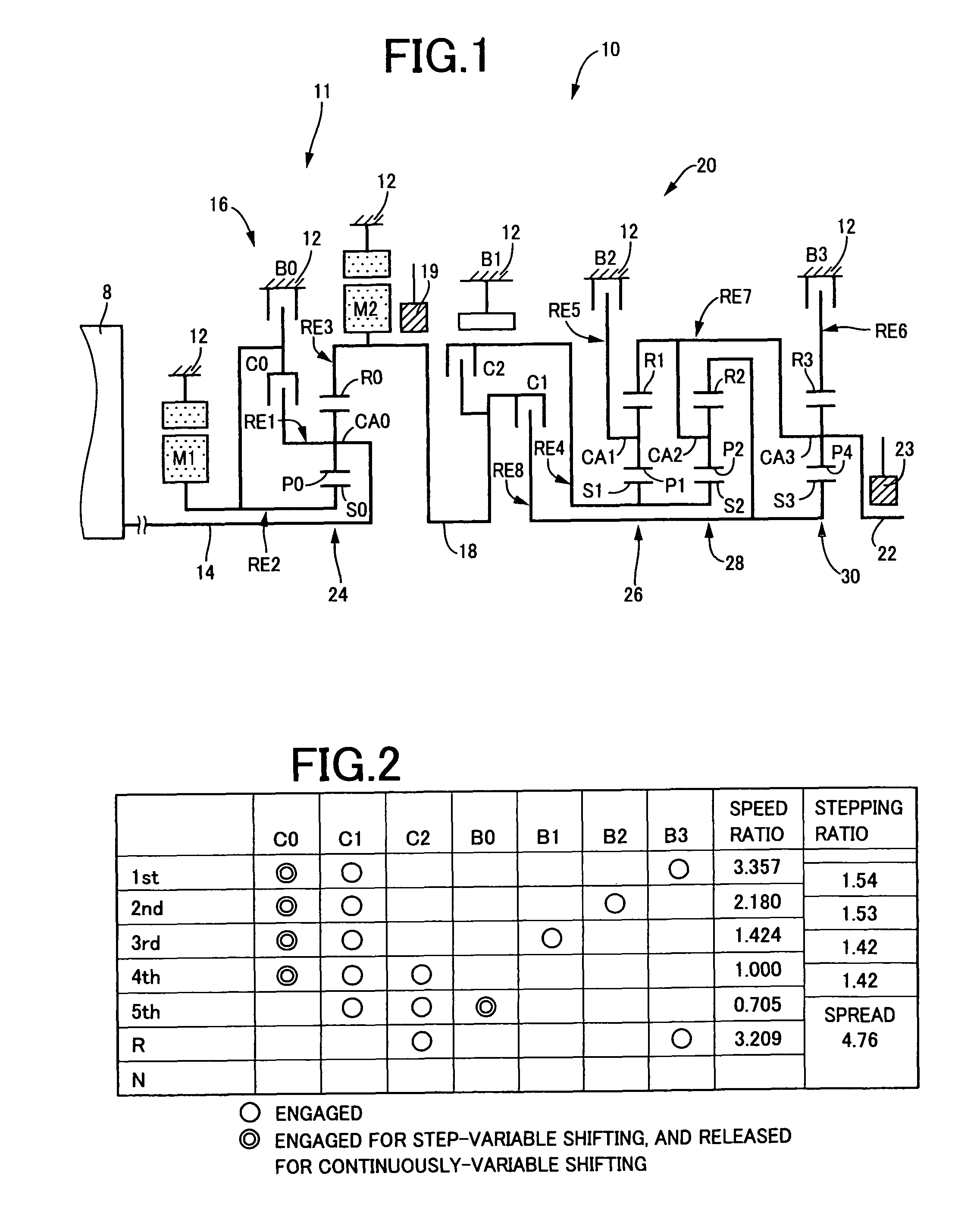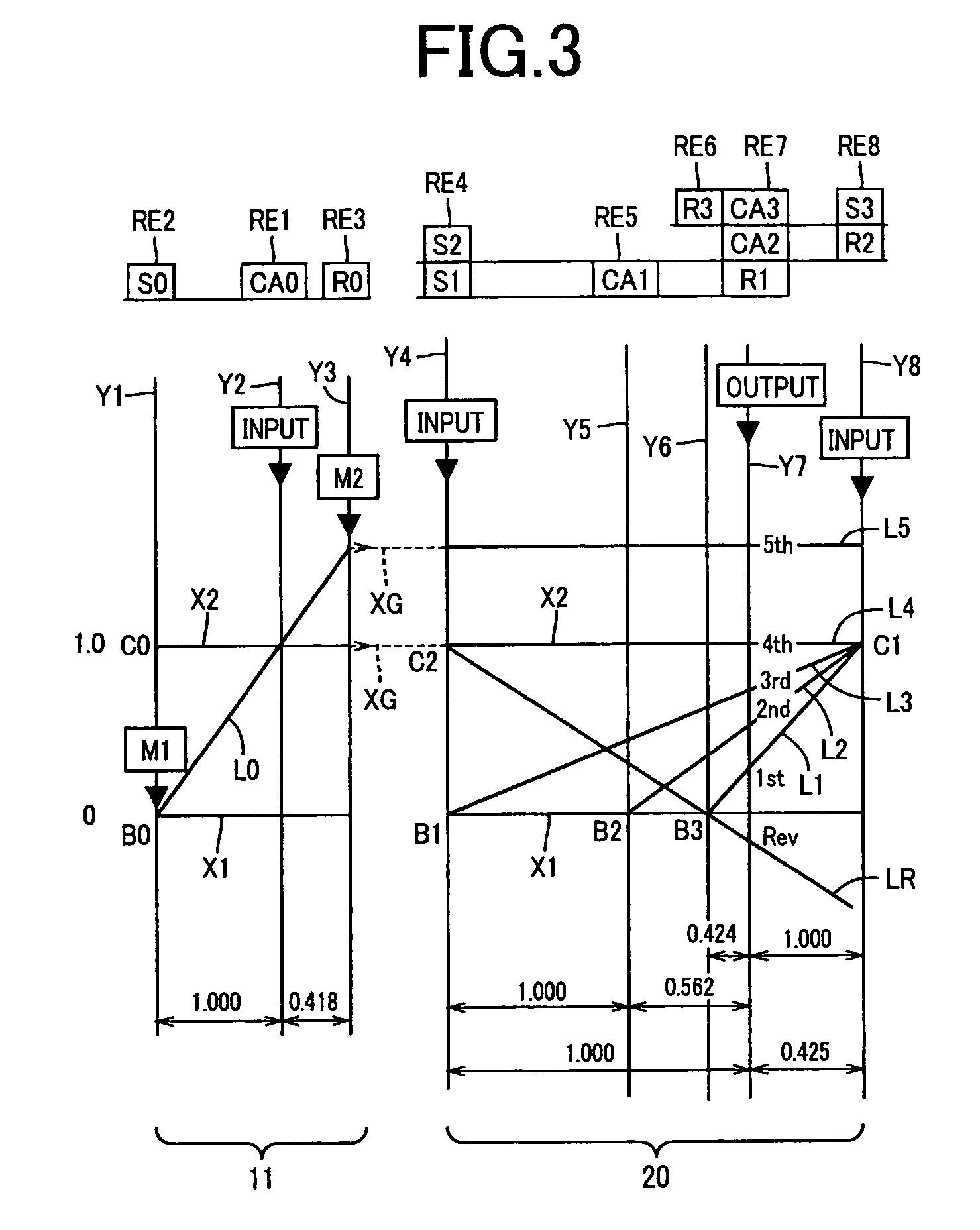Control apparatus for vehicular power transmitting system
a control apparatus and transmission system technology, applied in the direction of vehicle sub-unit features, process and machine control, propulsion parts, etc., can solve the problems of limiting the output torque to be transmitted to the drive wheels, excessive charging, and failure of the first electric motor to generate a sufficient reaction torque, so as to increase the ratio of the torque value received, prevent overcharging of the electric energy storage device, and increase the torque valu
- Summary
- Abstract
- Description
- Claims
- Application Information
AI Technical Summary
Benefits of technology
Problems solved by technology
Method used
Image
Examples
Embodiment Construction
[0040]Referring to the schematic view of FIG. 1, there is shown a transmission mechanism 10 constituting a part of a power transmitting system for a hybrid vehicle, which power transmitting system is controlled by a control apparatus according to one embodiment of this invention. In FIG. 1, the transmission mechanism 10 includes: an input rotary member in the form of an input shaft 14; a differential portion 11 connected to the input shaft 14 either directly, or indirectly via a pulsation absorbing damper (vibration damping device) not shown; a step-variable or multiple-step transmission portion in the form of an automatic transmission portion 20 disposed between the differential portion 11 and drive wheels 38 (shown in FIG. 6) of the vehicle, and connected in series via a power transmitting member 18 (power transmitting shaft) to the differential portion 11 and the drive wheels 38; and an output rotary member in the form of an output shaft 22 connected to the automatic transmission...
PUM
 Login to View More
Login to View More Abstract
Description
Claims
Application Information
 Login to View More
Login to View More - R&D
- Intellectual Property
- Life Sciences
- Materials
- Tech Scout
- Unparalleled Data Quality
- Higher Quality Content
- 60% Fewer Hallucinations
Browse by: Latest US Patents, China's latest patents, Technical Efficacy Thesaurus, Application Domain, Technology Topic, Popular Technical Reports.
© 2025 PatSnap. All rights reserved.Legal|Privacy policy|Modern Slavery Act Transparency Statement|Sitemap|About US| Contact US: help@patsnap.com



